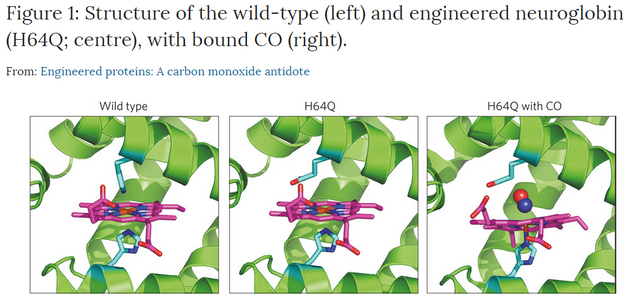New Antidote for CO Poisoning discovered
This Post is written from a new research published in journal nature: Engineered proteins: A carbon monoxide antidote
CO(Carbon monoxide) poisioning
Carbon monoxide is a poisonous gas that has no smell or taste.
After carbon monoxide is breathed in, it enters the bloodstream and mixes with haemoglobin (the part of red blood cells that carry oxygen around your body), to form carboxyhaemoglobin.
After that, the blood is no longer able to carry oxygen, and this lack of oxygen causes the body’s cells and tissue to fail and die.
Source of CO poisoning

Symptoms include:
• dizziness
• nausea (feeling sick) and vomiting
• tiredness and confusion
• stomach pain
• shortness of breath and difficulty breathing
• A tension-type headache
Treatment
No specific antidote is available till date for treatment of CO poisoining.
The medical treatment is to prevent the further exposure of the CO poisoing. To administer high concentrations of supplemental oxygen and, in some cases, to administer hyperbaric oxygen. In some cases of CO poisioned patients, the half-life of carboxy-haemoglobin (CO-bound haemoglobin) level is 6 hours(at sea level); with inhalation of 70–100% oxygen, the half-life drops to 74 minutes. Hyperbaric oxygen can reduce the half-life even further to 40 minutes.
CO poisoning causes inflammation oxidative stress, and a host of other biochemical changes Oxygen blocks the cascade of inflammation-mediated injury that follows CO poisoning. Acute symptoms can damage the nervous system and permanent brain and/or cardiac disability.
The New research
Azarov and his research team mutated the terminal histidine(an amino acid) in neuroglobin (a haemoglobin-like protein present in the nervous system) to glutamine(an amino acid), and made other changes to create a five-coordinated heme protein. In human blood, the administration of this modified neuroglobin reduced the half-life of carboxy-haemoglobin to 25 seconds, and the measured binding of the modified neuroglobin for CO was 500 times stronger than that of haemoglobin.
Mice that was injected with the modified neuroglobin after exposure to non-lethal levels of CO showed rapid decoupling(disassociation) of CO and haemoglobin. Mice that was exposed to lethal levels of CO experienced rapid and dramatic improvements in its heart rate and blood pressure, and survived the experiment, whereas the control mice did not. The CO-bound neuroglobin was excreted in the urine of mice.
Most important fact was that kidney normal structure was normal 48 hours after poisoning, and that the modified neuroglobin was not detected in other body tissues. The rapid improvement in cardiovascular parameters on administration of modified neuroglobin supports that this agent may scavenge CO from non-haemoglobin sources.

ITS USE IN HUMANS:
The research has not been tested in humans for clinical studies of safety, feasibility, dosing and efficacy. The clinical trials on humans are subjected for further research for final use in medical field
References
http://www.nature.com/articles/s41551-017-0030
http://stm.sciencemag.org/content/8/368/368ra173
https://en.wikipedia.org/wiki/Carbon_monoxide_poisoning